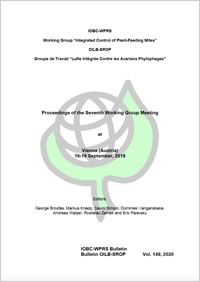
IOBC-WPRS Bulletin Vol. 149, 2020
€ 0.00
Working Group "Integrated Control of Plant-Feeding Mites"
Proceedings of the Seventh Working Group Meeting at Vienna (Austria), 16-19 September, 2019.
Editors: George Broufas, Markus Knapp, Sauro Simoni, Dominiek Vangansbeke, Andreas Walzer, Rostislav Zemek and Eric Palevsky.
ISBN 978-92-9067-334-7 [IX + 102 pp.].